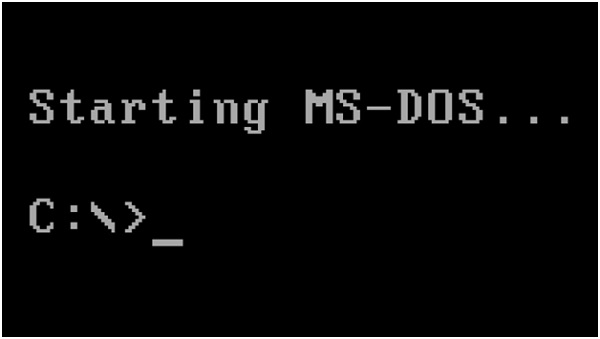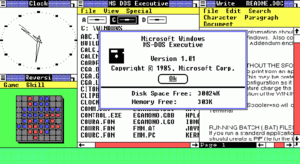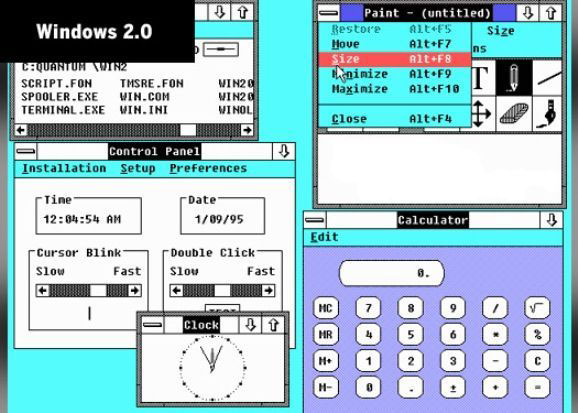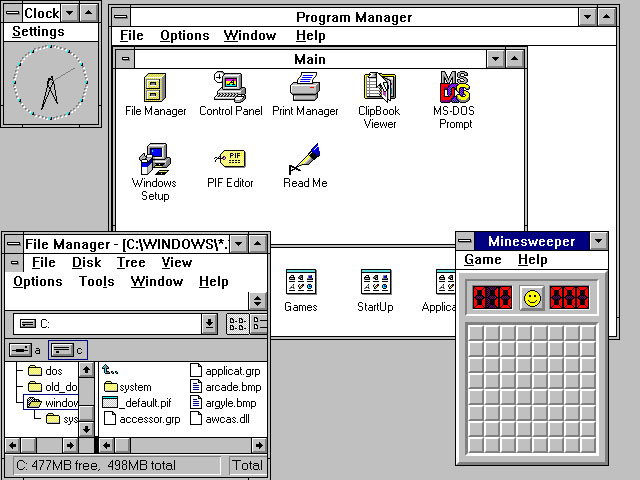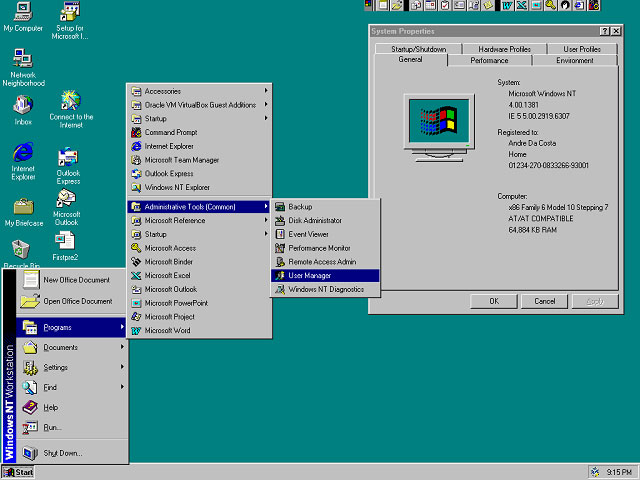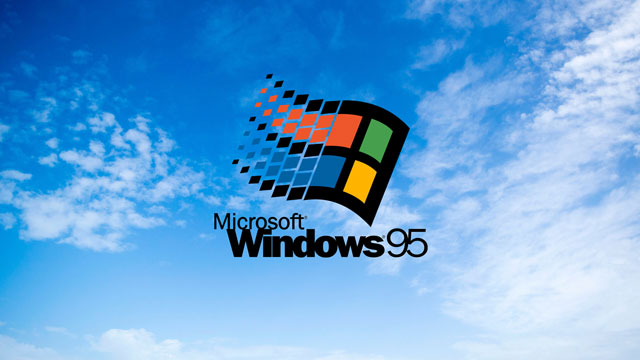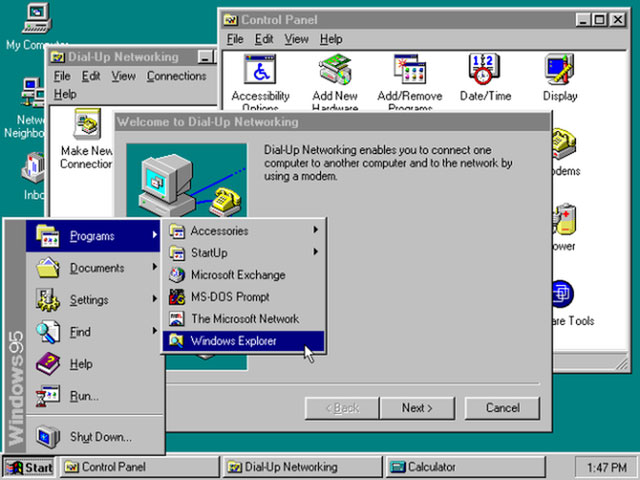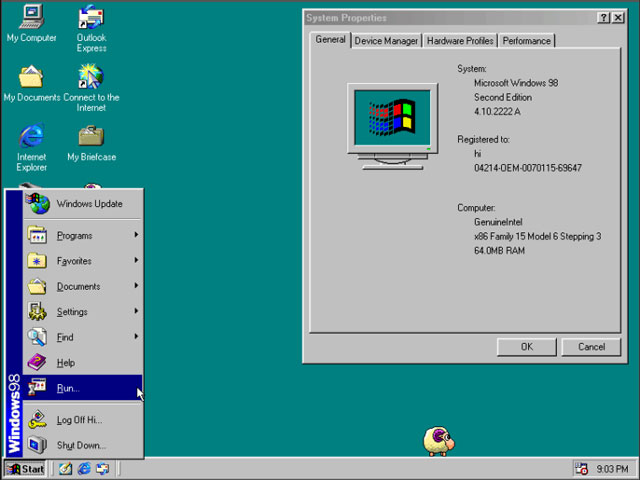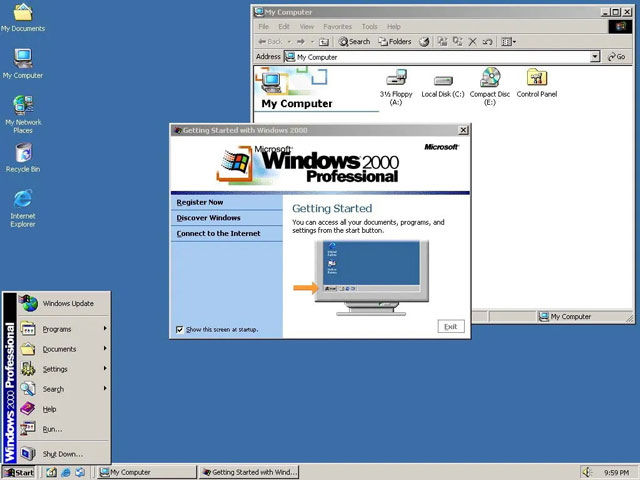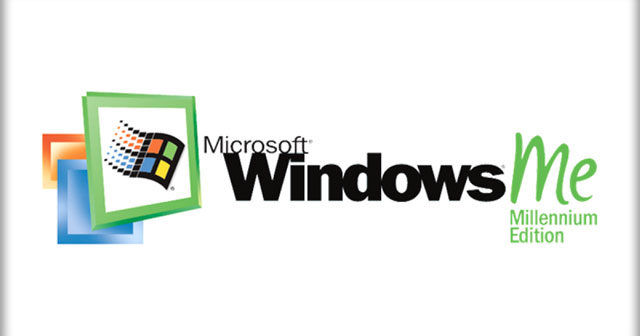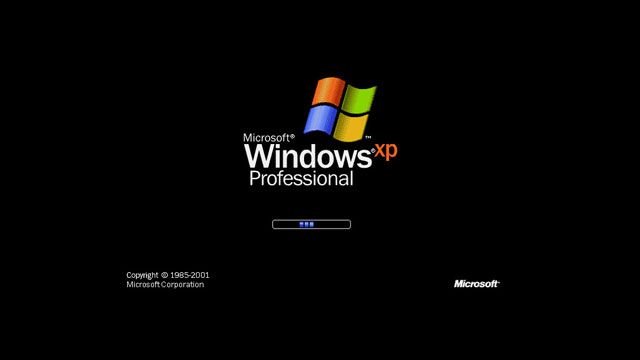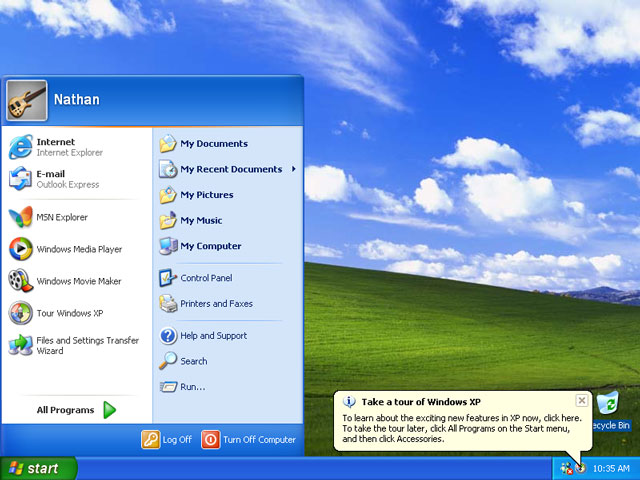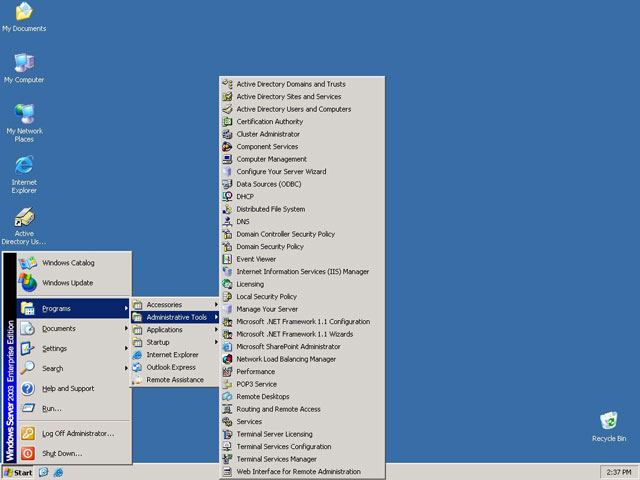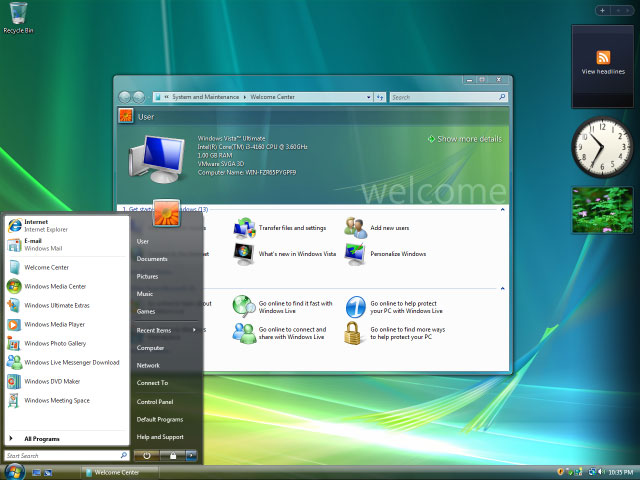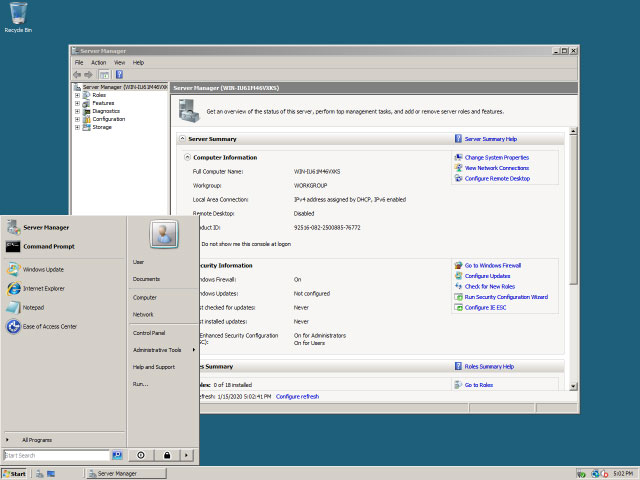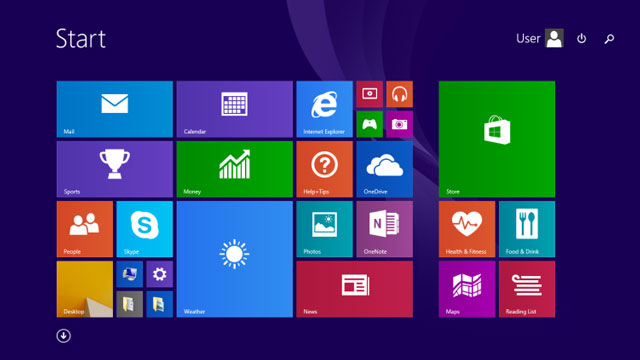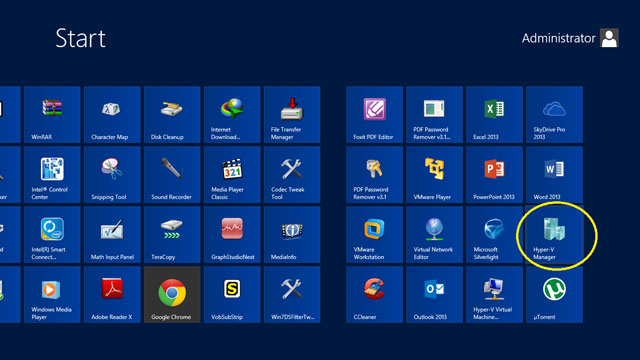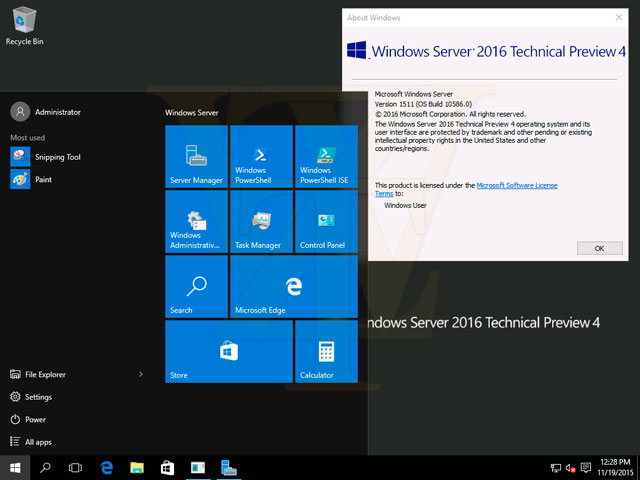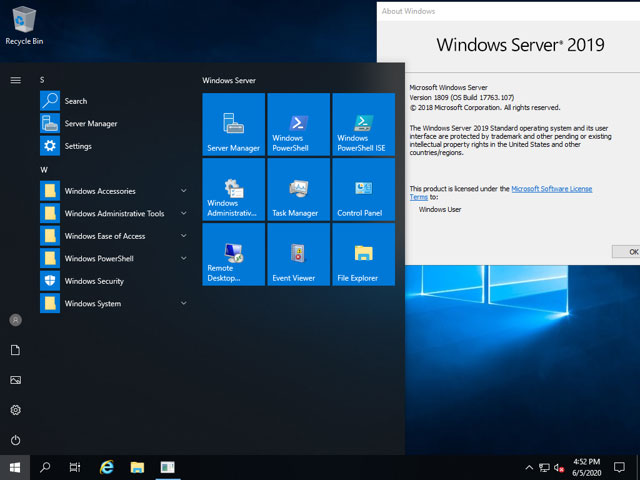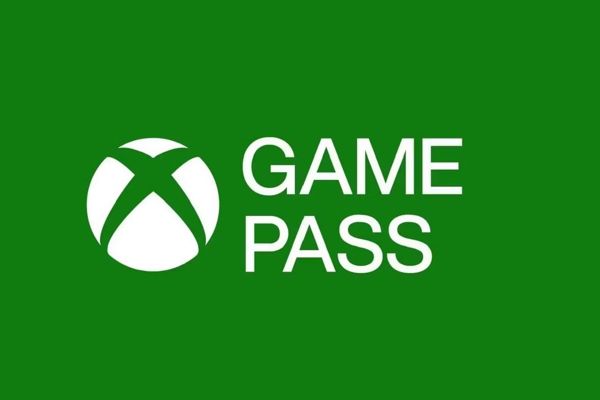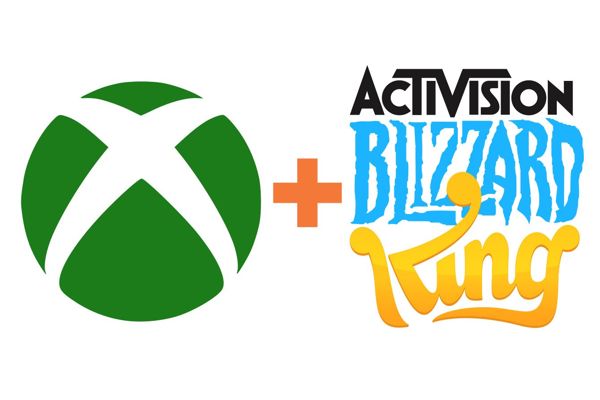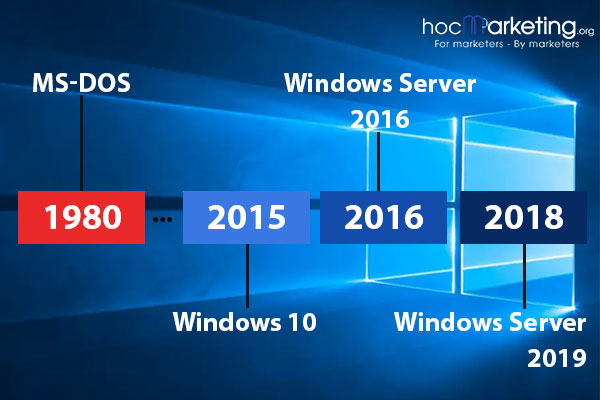
The growth of Microsoft Windows

The growth of Microsoft's Windows operating system through its versions. The analyzation of Microsoft's ups and downs associated with Windows versions.
Overview
It can be said that Microsoft Windows is a great product, when everyone knows it or has used it. However, few people know that Windows has a very long history of development, with ups and downs like our own lives. There are a total of about 12 major versions of the Windows operating system for personal users and more than 9 versions for business users, not to mention minor upgrades and the legendary MS-DOS operating system. Today, let's go through hocmarketing.org through the history of the product that you may be using right now.
Come on, let's get started!
MS-DOS: Age of Enlightenment
In the early 1980s, Microsoft successfully developed the MS-DOS operating system for IBM computers. Maybe at the present time, DOS is too outdated because this operating system is quite simple, simple (only 1 program runs on the operating system at a time) and users have to type commands to interact with the computer. computer, but in that decade, when computer technology was only in its infancy, DOS was a great invention. DOS allows users to access drives, open files, edit and save files, and many other functions. Microsoft took advantage of this early success to sell software to other manufacturers and quickly became one of the leaders in the software industry.
Windows 1.0 - 3.11: Growth period
Windows 1.0
On October 10, 1983, Bill Gates gave a public presentation about an upcoming computer operating system called Microsoft Windows, with a graphical interface (Graphical Interface) based on MS- DOS was already very successful before. And as a result, Windows 1.0 operating system version was released two years later, on October 20, 1985. This is a single-tasking operating system, with built-in application software including: Windows Paint, Windows Write and a simple word editor, scheduler, notepad, Control Panel and Command Prompt (Computer Terminal). so that users can use the already familiar MS-DOS command.
Windows 2.0 → 2.1x
Windows 2.0 version was released on December 9, 1987, inheriting the successes from Windows 1.0 and adding certain upgrades and improvements. There are almost no innovations in this release, other than performance improvements through better integration with newer hardware. The highlight of the Windows 2.0 version is not in itself, but in the application software that can be run, of which the most prominent is the Microsoft Office suite (Word, Excel, Powerpoint) and Aldus PageMaker. Versions 2.1x are released as updates to patch reported bugs and improve performance.
Windows 3.0
In 1990, Microsoft released Windows 3.0, a version of the operating system that was completely revamped with applications like the File Explorer and the Task Manager that we still use. in use today. With this version, Microsoft sold more than 10 million copies within 2 years. This was considered a phenomenal success at the time. Besides, Windows 3.0 has become the pre-installed operating system in computers sold on the market, marking an important milestone in Microsoft's development history.
During the 1990s, Microsoft's communications efforts convinced businesses that Microsoft's software was not only the best, but that it was regularly updated and upgraded. Microsoft has spent millions of dollars on magazine advertising, as well as receiving endorsements from major and reputable magazines in the software field, making Microsoft Windows and Microsoft Office must-have software on the Internet. computer at that time. The slogan "Where Do You Want to Go Today?" was broadcast in 1998 not only to promote Microsoft products, but also to promote the company image itself, that Microsoft can empower other companies and consumers.
Windows NT
Windows NT (New Technology) is a fork in versions of the home operating system Microsoft. Initially, Windows NT was aimed at business users, when the first version (Windows NT - released on July 27, 1993) of this fork was produced for workstations and servers. Windows NT supports local area networking (LAN) extremely well, and allows users to create multiple accounts on the same computer, also at the time of the explosion of intranet working models, stores Internet.
Các phiên bản Windows NT nâng cấp sau đó bao gồm Windows NT 3.1 (27/7/1993), 3.5 (21/9/1994), 3.51 (30/5/1995) và 4.0 (24/8/1996) lần lược được ra mắt với nhiều cải tiến vượt trội, trong đó điểm sáng nằm ở Windows NT 3.5 khi bản cập nhật này hỗ trợ rất nhiều loại phần cứng mới, cũng như cập nhật bộ mã Win32 APIs với vai trò cốt lõi để các nhà phát triển bên thứ 3 tạo ra các phần mềm ứng dụng có thể tương thích với những hệ điều hành sau này.
Windows 95, Windows 98 & Windows 2000 - Keep growing
Windows 95
Returning to the target audience of individual users, Microsoft released a successor to Windows 3.x, called Windows 95, in August 1995.
In this version, the interface is refined to look more beautiful and friendly, with the first appearance of the Taskbar, helping users to easily manage open tasks. This is also the version that marks the transition to 32-bit emulation platform (the 16-bit Kernel kernel is still retained for compatibility with previous application software).
Windows 98
Both Windows 95 and Windows 98 take the name corresponding to the year of release. Windows 98 was released by Microsoft on June 25, 1998 with many significant improvements and upgrades compared to Windows 95. This version began to support a lot of drivers for new hardware, as well as drive formatting. FAT32 disk allows creating partitions larger than 2GB. Microsoft also brought networking features from Windows NT, including establishing intranet links, sharing files and hardware between computers on the same local area network (LAN).
Windows 2000
Windows 2000 is an upgraded version for business customers, released on February 17, 2000. This is a version of Windows built on top of Windows NT. Windows NT includes 5 types of editions: Professional, Server, Advanced Server, Datacenter Server and Small Business Server, with functional scale from large to small. This is a combination of the previously successful Windows NT platform, combined with the beautiful interface design style of Windows 95 and Windows 98.
Windows Me - Microsoft's Misstep
Windows Me stands for "Windows Millenium", the operating system version released on September 14, 2000. This was the last version of Windows built on top of DOS. Although in this version there is the appearance of Edit Video application software called Windows Movie Maker and System Restore utility (system restore), Windows Me is a "forgettable" version of Microsoft when it exists quite a lot. many errors, easy hard drive fragmentation and system crashes.
Most of the users who used Windows before chose to skip this upgrade version.
Windows XP - Golden Milestone
Microsoft continued to release new products, including Windows 2000 (2000) and Windows XP (2001). Windows XP is considered one of the most successful versions of Windows operating system of all time. Windows XP is Microsoft's first personal operating system version, built on the NT kernel, replacing the Windows 9x kernel, which was developed based on MS-DOS. As a multitasking computer operating system (can execute many tasks at the same time), with an extremely user-friendly interface (UI), Windows XP quickly won the hearts of users around the world. at that time. Surely you 9x, 8x also once lived with Windows XP, through personal computers or computers at NET shops. The application software written to run on Windows XP is also countless, from office software, graphics, programming, to entertainment software, games. On September 9, 2002, Microsoft released the SP1 update for Windows XP with many new features, support for a number of new hardware, the most notable of which is USB 2.0. Versions SP2 (May 6, 2004) and SP3 (April 21, 2008) were also released with improvements in security and stability improvements. Even now - in 2021, there are still some communities that use Windows XP for work and play.
Years later, Microsoft's stock price fell by more than $40 per share as users waited for the next operating system to be released. Besides, Microsoft began to face its arch-rival entering the market - Apple. Although only Macbook, iMac with MacOS operating system is a direct competitor to Microsoft's Windows, but Apple has an extremely clever business strategy. In addition to Macbook & iMac, Apple also launched other products such as Iphone, IPod, (so far we also have Ipad, Apple Watch) with great ability to sync between devices through iCloud account (Apple ID). Surveys show that users tend to choose Macbook or iMac higher if they have used Iphone or Ipod before. Not only that, Apple also ran a media campaign with the title "Get a Mac" (buy a Mac), with the image of an intelligent, creative, user-friendly, secure ecosystem. high. As a result, Microsoft had to watch in silence as a large number of its customers switched to using Apple products.
Windows Server 2003 & Windows Server 2003 R2
After the success of Windows 2000 and Windows XP, Microsoft continued to release the next operating system version for business customers - Windows Server 2003. This version is not much different from Windows 2000. Worthwhile Attention lies in .NET, the working environment for application software developers built into this operating system.
Microsoft released an upgraded version of Windows Server 2003 R2 in December 2005. Customers who have purchased a previous version of Windows Server 2003 will be supported to upgrade to Server 2003 RT for free. The improvement in this release lies in the Active Directory Federation Services security mechanism (more advanced than Active Directory), which allows external services to be included in the system's Single Sign On (one-time authentication) permissions in the internal network.
Windows Vista - Smudge hard to fade
Unable to let Apple dominate any more, in 2007 Microsoft released a highly anticipated version of its operating system, Windows Vista. Contrary to expectations to bring great success, Windows Vista was a catastrophic failure of Microsoft, when this version of the operating system was full of extremely annoying bugs. Not stopping there, the improvement in interface design, although more beautiful, is extremely less user-friendly. In an effort to salvage the image of the business, Microsoft launched the "I'm a PC" (I'm a PC) communication strategy. This is both a strategy to strengthen the loyalty of customers and employees of Microsoft, and a strategy to respond to Apple. However, it seems that this effort has not yielded very satisfactory results when many Microsoft customers have landed at Apple.
Windows Server 2008 & Windows Server 2008 R2
Microsoft took more than 3 years to release the next operating system version for servers and workstations - Windows Server 2008 (released on February 27, 2008). One of the most anticipated and received features of Windows Server 2008 is Microsoft's Hyper-V virtualization system. This decision may have been taken to enhance Microsoft's competitiveness in the field of virtualization amid the growing demand for a virtualized system in the information technology market. In addition, Windows Server 2008 also allows users to run in command line mode (no need for graphical interface/GUI) to save resources and power consumption of servers.
Upgraded version of Windows Server 2008 R2 was released by Microsoft on July 22, 2009. As with Windows 2003 R2, customers using Windows Server 2008 will receive a free upgrade to 2008 R2. The R2 instance supports a 64-bit operating environment and many improvements in Active Directory, most notably the Remote Desktop Services mechanism.
Windows 7 - Mistakes Fixed
To correct the mistakes made before, in 2009, Microsoft released the successor operating system version called Windows 7 with many significant improvements compared to Windows Vista. And as expected of Microsoft, Windows 7 was very enthusiastically received by the PC community around the world, as it delivered a great experience. Windows 7 is a combination of the new interface design of Windows Vista, the orderliness, logic and friendliness of Windows XP, and of course the high stability and security. Before the official release, there were more than millions of pre-orders on Amazon. After 6 months of official release, more than 100 million copies have been sold worldwide. This number increased to 630 million copies as of July 2012. Microsoft also launched the communication strategy "Windows 7 was my idea" (Windows 7 was my idea) with great success, when Microsoft's stock price started to rise again.
Windows 8 - The Tragedy of Vista
After the great success of Windows 7, Microsoft continued to release Windows 8 on October 26, 2012. Unfortunately, Windows 8 went down the path of Windows Vista when this operating system has weak stability, poor compatibility with application software, and the interface changes in a less user-friendly direction. The biggest change in the interface of Windows 8 is that Microsoft has removed the Start bar (the sidebar contains the list of programs when clicking the Start button on the Taksbar), and replaced it with a strange and ineffective Metro interface. fruit). This once again caused a number of Microsoft customers to find new landings, most of which are Macbooks and iMacs with Apple's MacOS operating system.
One thing that we can clearly understand, Microsoft created the Metro interface to create unity between Windows for PC and Windows Phone (operating system for smartphones) at that time.
Not long after, Microsoft released Windows 8.1 to restore the Start Menu bar, but that was still not enough for users to return because the problem of errors and compatibility with application software and drivers has not been resolved thoroughly.
Windows Server 2012 & Windows Server 2012 R2
2012 was the period when virtualization (cloud) technology began to develop in the US and surrounding areas. This is also the goal that Microsoft released Windows Server 2012 (October 26, 2012). In addition to targeting the operating system to be installed on intranet servers, Windows Server 2012 is also aimed at Cloud servers. The Hyper-V system is available as a resource for Cloud Servers, easily integrating with onsite (on-premises) distribution as local servers (Local Server).
However, Windows server 2012 still made a design mistake when bringing the Metro interface mechanism into this version. However, the impact is not much because not all servers run on GUI (graphical interface).
Upgraded version of Windows Server 2012 R2 (released on October 17, 2013) expands the use of PowerShell, better "onsite" support, better integration of cloud services.
Windows 10 - Recover all losts
On July 29, 2015, Microsoft released the Windows 10 operating system version (latest as of the first year of 2021). Windows 10 shows that Microsoft has put a great deal of effort into listening to users' opinions and incorporating them into the design and development process. The Start menu bar feature has been brought back with many new improvements, but still inherits the advantages from previous successful versions of Windows (Windows 7, Windows XP). Another new bright spot of Windows 10 is the anti-virus software "Windows Defender" built into the operating system. This software is so good that now users hardly need to use 3rd party software to protect their computer.
Windows Server 2016
After the success of Windows 10, Microsoft also included the design language of Windows 10 in the next operating system version for servers - Windows Server 2016 (September 26, 2016). Besides, this version was born based on the context of server virtualization trend, when many virtual servers (containers) can run independently inside a physical server. This requires the compactness of the operating system, and of course, Windows Server 2016 can respond well.
Windows Server 2019
Windows Server 2019 is the latest version of the server operating system up to the present time (3/2021), released on October 6, 2018. This version inherits the superior features of the previous version (Server 2016) and adds upgrades, including enhanced security, smaller and more compact containers, and good support for the hyper-converged infrastructure platform. (Hyperconverged infrastructure - HCI), the Project Honolulu server management tool, and especially the Windows Subsystem on Linux, allows users to install virtual Windows servers on the parent server running the Linux operating system.
Windows 11 (Promising New Era)
On October 5, 2021, Microsoft released the successor operating system version - Windows 11. This operating system version is considered a strategic card of Microsoft to be able to compete with MacOS when Apple launched the M1 chip. Optimized exclusively for MacOS and iPadOS, and beyond, regaining its original glory like the 2000s. Notable points in Windows 11 include:
- The interface is optimized to be more user-friendly, especially on touch screen devices.
- Performance is significantly improved, especially on laptop models with longer battery life and faster processing.
- Compatibility with Android apps via Amazon Appstore.
- Windows Defender with many outstanding improvements
Thus, we have gone through the development process of the Microsoft Windows operating system. In your opinion, if there is a version that hocmarketing.org has not listed, please comment below to let us know. If you feel this article is good and useful, please give us a like, share or rate! Friendly welcome!
